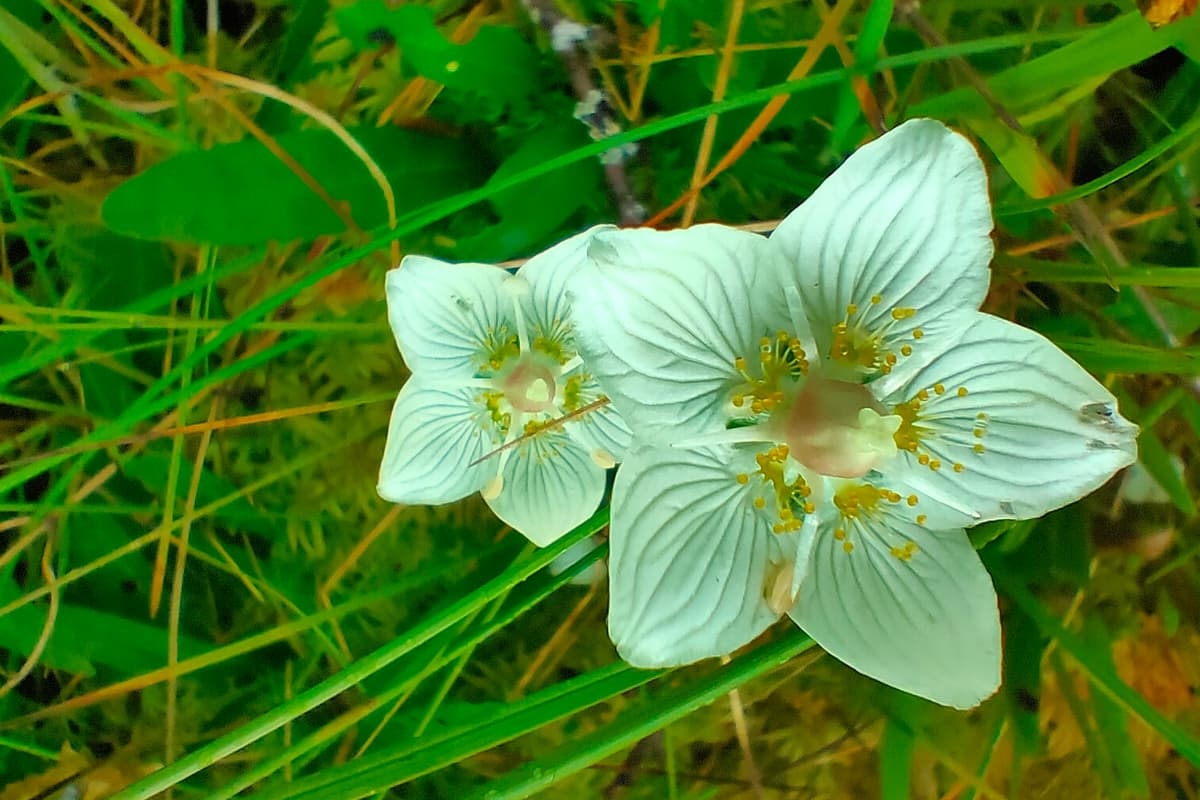
Grass of Parnassus is a fascinating plant with a name that sparks curiosity. Despite its name, it isn't a true grass but a member of the Celastraceae family. This perennial herb thrives in moist, boggy areas and is known for its striking white flowers adorned with delicate green veins. Did you know that Grass of Parnassus has been admired since ancient times, even mentioned in Greek mythology? Its unique beauty and ecological importance make it a subject of interest for botanists and nature enthusiasts alike. Want to learn more about this intriguing plant? Here are 36 captivating facts that will deepen your appreciation for Grass of Parnassus.
What is Grass of Parnassus?
Grass of Parnassus, despite its name, isn't actually a grass. This beautiful plant belongs to the Parnassiaceae family and is known for its striking white flowers. Let's dive into some fascinating facts about this unique plant.
-
Scientific Name: The scientific name of Grass of Parnassus is Parnassia palustris.
-
Not a Grass: Despite its name, Grass of Parnassus is not a grass but a flowering plant.
-
Flower Shape: The flowers are star-shaped, making them quite distinctive.
-
Petal Count: Each flower typically has five petals.
-
Color: The petals are usually white with green veins.
Habitat and Distribution
Grass of Parnassus can be found in various parts of the world. Its preferred habitats and geographical distribution are quite interesting.
-
Native Regions: This plant is native to Europe, Asia, and North America.
-
Wetlands: It thrives in wetland areas, such as marshes and bogs.
-
Altitude Range: Grass of Parnassus can grow at altitudes ranging from sea level to alpine regions.
-
Soil Preference: Prefers calcareous (chalky) soils.
-
Light Requirements: It grows best in full sun to partial shade.
Historical and Cultural Significance
Grass of Parnassus has been mentioned in various historical texts and has cultural significance in different regions.
-
Ancient Greece: Named after Mount Parnassus in Greece, which was sacred to Apollo and the Muses.
-
Symbolism: Often symbolizes purity and beauty in literature.
-
Medicinal Uses: Historically used in traditional medicine for its supposed healing properties.
-
Poetry: Featured in poems and songs due to its delicate beauty.
-
Folklore: In some cultures, it is believed to bring good luck.
Botanical Characteristics
Understanding the botanical characteristics of Grass of Parnassus can help in identifying and appreciating this plant.
-
Height: Typically grows to a height of 10-30 cm.
-
Leaves: The leaves are heart-shaped and grow at the base of the plant.
-
Stem: The stem is slender and can be slightly hairy.
-
Root System: Has a fibrous root system that helps it anchor in wet soils.
-
Bloom Time: Flowers usually bloom from late summer to early autumn.
Ecological Importance
Grass of Parnassus plays a role in its ecosystem, contributing to the biodiversity of wetland areas.
-
Pollinators: Attracts various pollinators, including bees and butterflies.
-
Habitat: Provides habitat for small insects and other wildlife.
-
Water Purification: Helps in maintaining the health of wetland ecosystems by participating in water purification.
-
Biodiversity: Contributes to the biodiversity of the regions where it grows.
-
Indicator Species: Acts as an indicator species for healthy wetland environments.
Conservation Status
The conservation status of Grass of Parnassus varies depending on the region and local environmental conditions.
-
Protected Areas: Found in several protected areas and nature reserves.
-
Threats: Threatened by habitat loss due to drainage of wetlands and development.
-
Conservation Efforts: Various conservation efforts are in place to protect its natural habitats.
-
Endangered Status: In some regions, it is considered endangered or vulnerable.
-
Reintroduction Programs: Some areas have reintroduction programs to help restore populations.
Fun Facts
Let's wrap up with some fun and quirky facts about Grass of Parnassus that you might not know.
-
Name Origin: The name "Grass of Parnassus" was coined by Carl Linnaeus, the father of modern taxonomy.
-
Insect Traps: The flower has tiny hairs that can trap small insects, although it is not carnivorous.
-
Longevity: Individual plants can live for several years under the right conditions.
-
Flower Scent: The flowers have a faint, sweet scent that attracts pollinators.
-
Garden Use: Sometimes used in garden ponds and water features for its aesthetic appeal.
-
Photography: A popular subject for nature photographers due to its striking appearance.
The Final Word on Grass of Parnassus
Grass of Parnassus, with its delicate white flowers and unique habitat, is a fascinating plant. Found in wetlands and marshes, it thrives in moist environments. Its name, inspired by Mount Parnassus in Greece, adds a touch of mythological charm. This plant isn't just pretty; it plays a crucial role in its ecosystem, supporting various insects and wildlife. Despite its beauty, it's not widely known, making it a hidden gem in the plant world. Whether you're a botany enthusiast or just love nature, Grass of Parnassus is worth your attention. Next time you're near a wetland, keep an eye out for this lovely plant. It might just surprise you with its simple elegance and ecological importance. So, there you have it, a brief yet comprehensive look at this remarkable plant. Happy exploring!
Was this page helpful?
Our commitment to delivering trustworthy and engaging content is at the heart of what we do. Each fact on our site is contributed by real users like you, bringing a wealth of diverse insights and information. To ensure the highest standards of accuracy and reliability, our dedicated editors meticulously review each submission. This process guarantees that the facts we share are not only fascinating but also credible. Trust in our commitment to quality and authenticity as you explore and learn with us.
